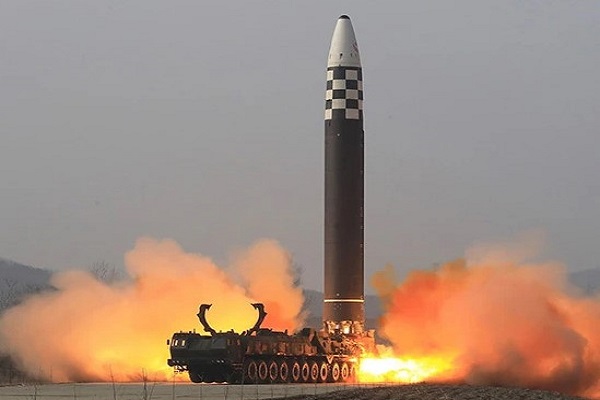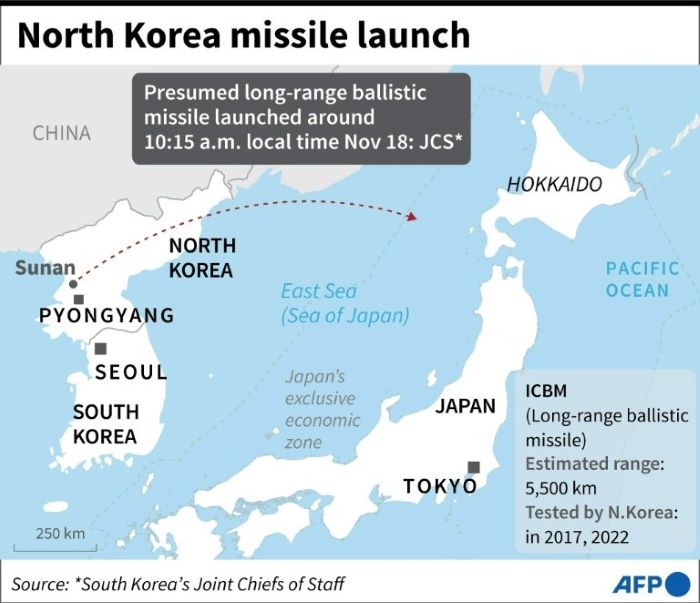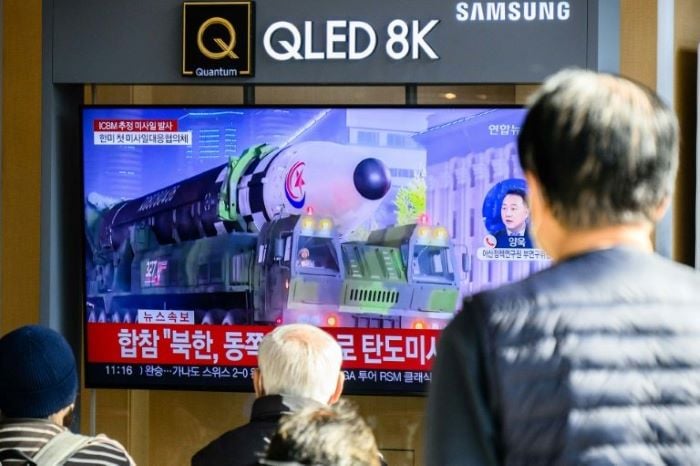ICBM launched by North Korea falls close to Japan

ICBM launched by North Korea falls close to Japan
North Korea fired an intercontinental ballistic missile Friday, which Japan said may have had the range to hit the US mainland.
The missile believed to have landed in Japan’s exclusive economic zone (EEZ). Prime Minister Fumio Kishida said as he blasted the launch as “absolutely unacceptable”.
The launch is Pyongyang’s second in two days and part of a record-breaking blitz in recent weeks.
Also Read: South Korea, USA fire missiles in response to North Korea
Confirming the launch, Tokyo said that — based on its calculations — the missile may have had the range to hit the US mainland.
In a statement, the White House “strongly” condemned the test launch.
North Korea claims the recent wave of launches is a response to Washington’s moves to bolster its protection of regional security allies, South Korea and Japan.
South Korea’s Joint Chiefs of Staff said it had “detected a long-range ballistic missile (ICBM) around 10:15 (0115 GMT) fired from the Sunan area in Pyongyang towards the East Sea”, referring to the body of water also known as the Sea of Japan.
The missile flew 1,000 km (621 miles) at an altitude of 6,100 km and speeds of Mach 22, the South Korean military said, calling it a “serious provocation damaging peace and security on the Korean Peninsula”.

Tokyo’s Defence Minister Yasukazu Hamada told reporters that the “ICBM-class missile” had fired on a “lofted trajectory”. Meaning the missile is fired up not out, typically to avoid overflying neighbouring countries.
Also Read: Seoul: North Korea fired two ballistic missiles
“Based on calculations taking the trajectory into account, the ballistic missile this time around could have had a range capability of 15,000 km, depending on the weight of its warhead, and if that’s the case, it means the US mainland was within its range,” he said.
The launch comes a day after North Korea fired a short-range ballistic missile as its minister of foreign affairs, Choe Son Hui, warned Pyongyang would take “fiercer” military action if the United States strengthened its “extended deterrence” commitment to regional allies.
Washington has been seeking to boost regional security cooperation and ramp up joint military drills in response to increasing provocations from the nuclear-armed North.
US President Joe Biden discussed North Korea’s recent missile tests with Chinese counterpart Xi Jinping earlier this week and also spoke with leaders from Tokyo and Seoul, as fears grow that the reclusive regime will soon carry out its seventh nuclear test.

North Korea was also top of the agenda when leaders of China and Japan held their first face-to-face talks in three years Thursday at the Asia-Pacific Economic Cooperation (APEC) forum in Bangkok.
Also Read: Covid-19: North Korea has confirmed six deaths
Experts said the launch of one of North Korea’s most powerful weapons was a clear sign leader Kim Jong Un was displeased by the recent talks.



